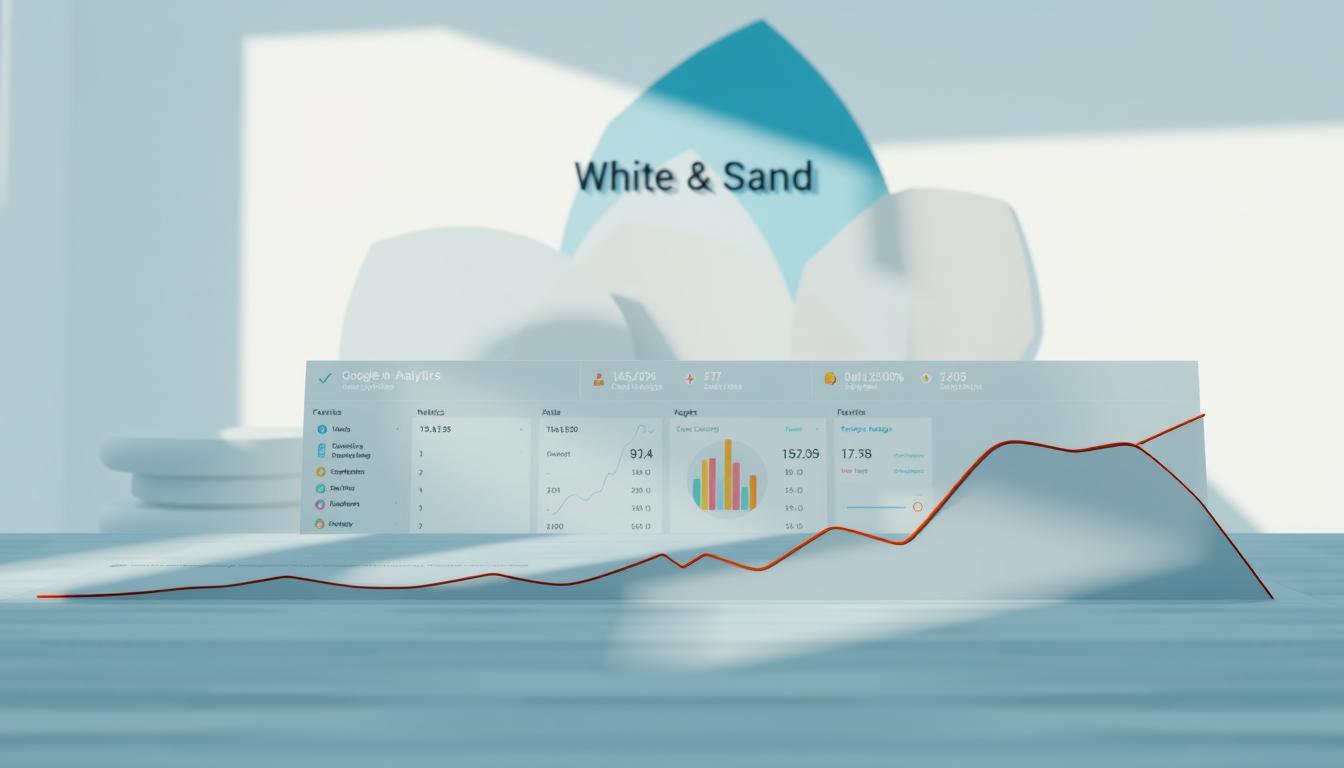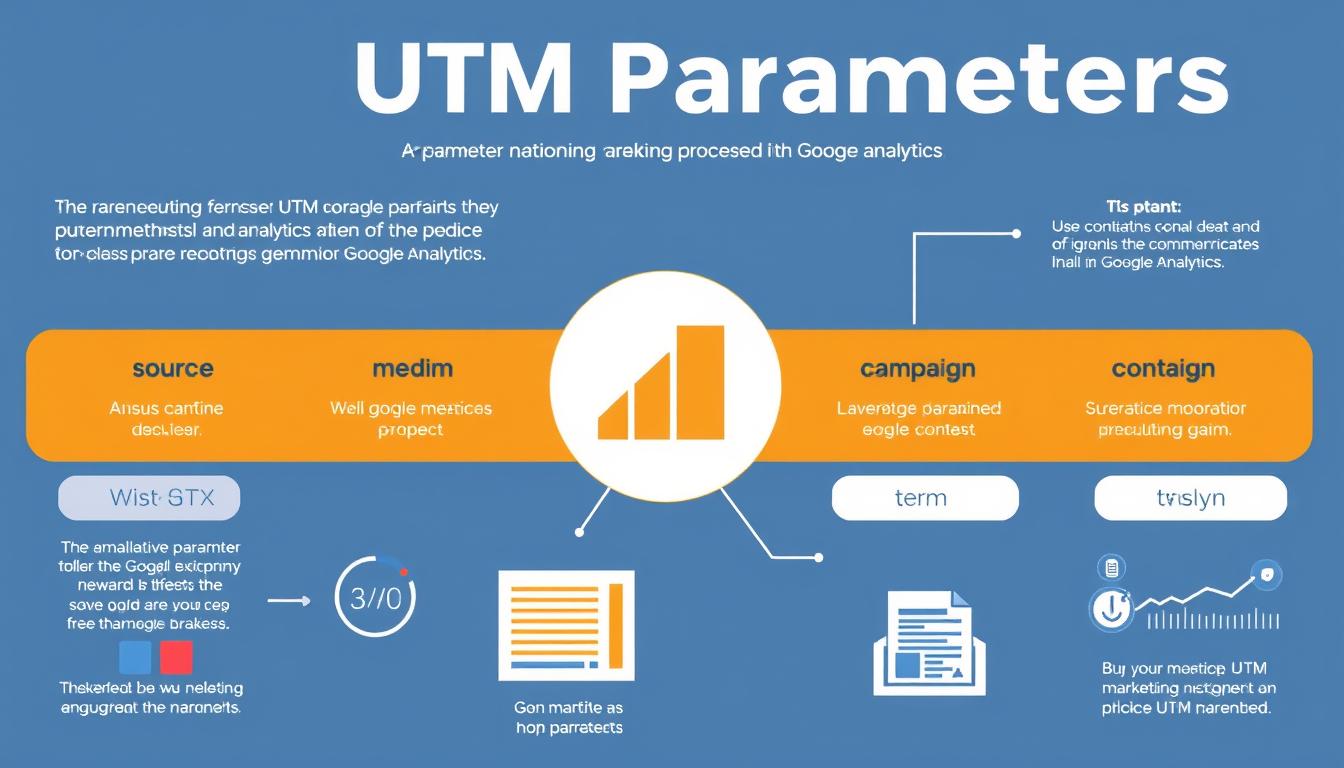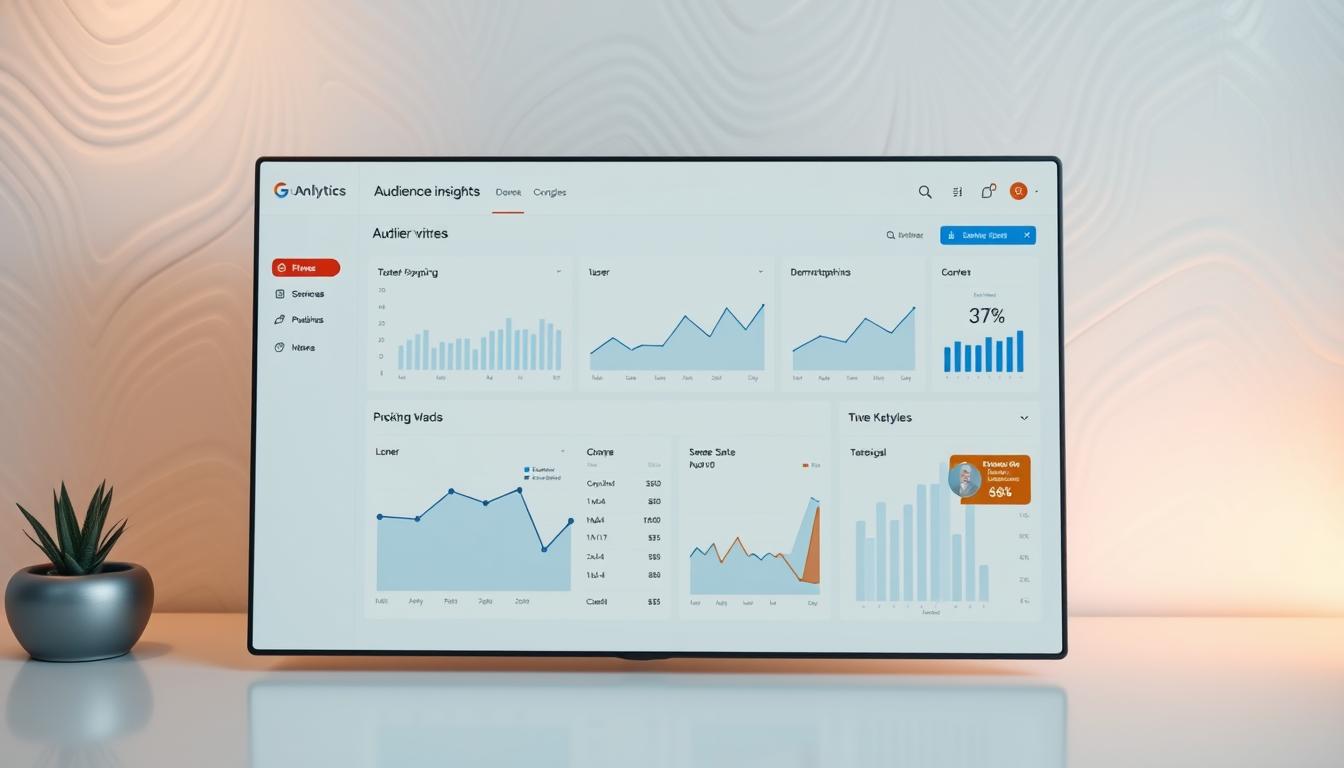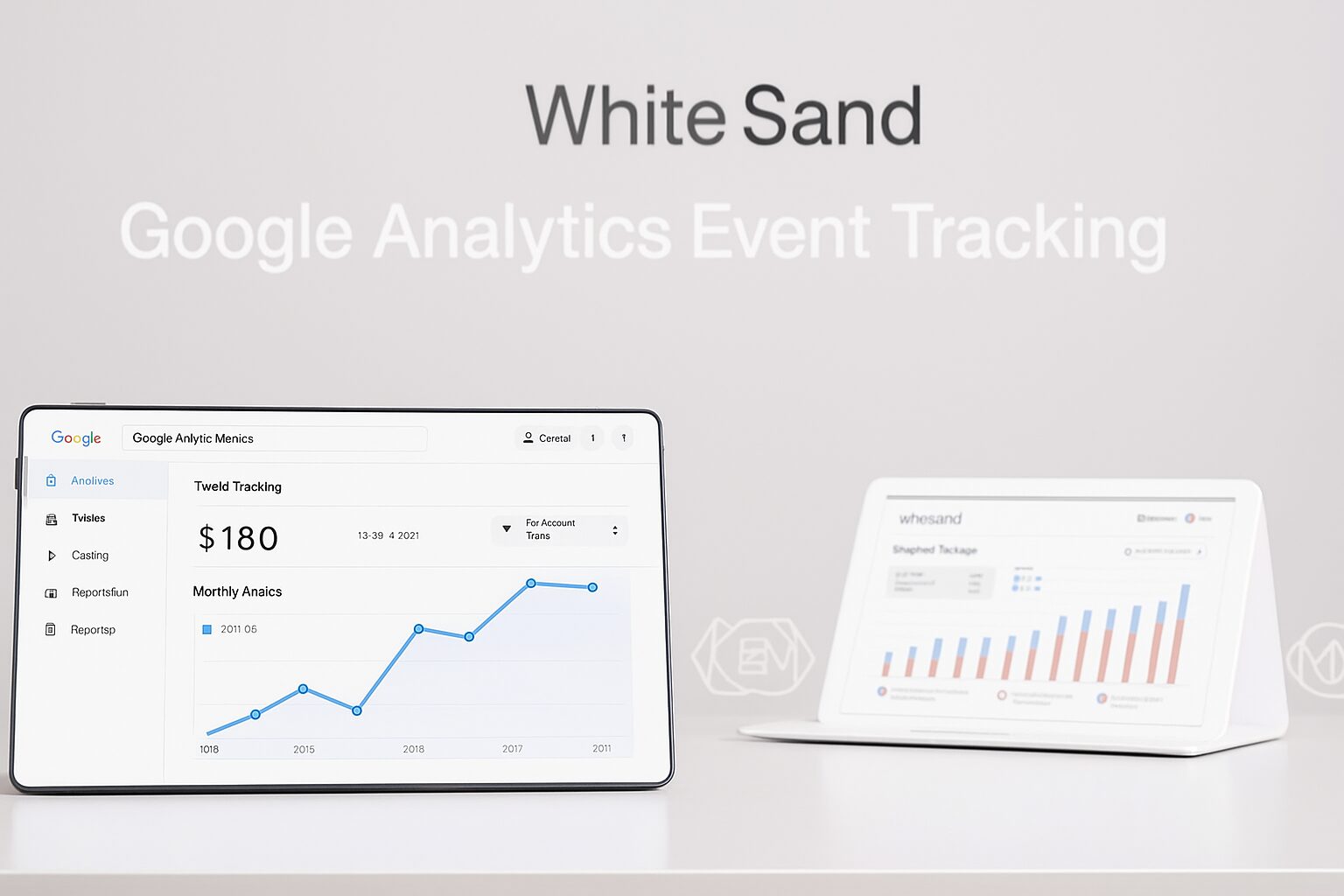
How We Help You Utilize Google Analytics Effectively
Unlock the full potential of your website with our expert guidance on Google Analytics. Many businesses struggle to maximize the benefits of this powerful tool due to its complex interface.
At White Sand, we understand the challenges of navigating Google Analytics. Our team is dedicated to helping you turn raw data into actionable insights that drive business growth. We offer
comprehensive services, from initial setup to advanced analysis, tailored to your specific needs.
By leveraging our expertise, you’ll gain a deeper understanding of your website’s performance and be able to make data-driven decisions to boost conversions and engagement. Contact us at deepali@whitesand.co.in or call (+91)98259-40020 to start optimizing your marketing metrics.
Key Takeaways
- Expert guidance on utilizing Google Analytics for business growth
- Comprehensive services tailored to your specific business needs
- Data-driven insights to boost conversions and engagement
- Personalized support to maximize the benefits of Google Analytics
- Improved website performance through data analysis
Understanding the Power of Google Analytics
In today’s digital landscape, leveraging Google Analytics is essential for making informed business decisions. Google Analytics serves as the foundation for understanding your online audience,
providing crucial insights into who visits your website, how they found you, and what actions they take.
What Google Analytics Can Do for Your Business
Google Analytics is a free data analytics tool from Google that helps you analyze your website and application performance. It seamlessly integrates with Google’s other marketing and advertising
platforms, including Google Ads, Search Console, and Data Studio. The platform provides essential metrics that reveal your website’s performance, including user engagement, conversion rates,
traffic sources, and audience demographics.
By using Google Analytics, businesses can identify underperforming pages, highlight successful marketing channels, and reveal opportunities for optimization. This data-driven approach enables
companies to transform their data into strategic business decisions that drive growth.
The Evolution to Google Analytics4 (GA4)
The latest iteration of Google Analytics is Google Analytics4 (GA4), which represents a significant shift from the previous Universal Analytics (UA) version. GA4’s event-based tracking model offers
more flexibility and cross platform insights than the previous session-based model, allowing for a better understanding of the customer journey across devices and platforms.
With our guidance, you’ll learn how GA4’s predictive capabilities and enhanced machine learning features can help forecast customer actions and identify high-value audience segments, ultimately
enhancing your website’s performance and user experience.
Our Approach to Google Analytics Setup
At the heart of our Google Analytics setup approach is a deep understanding of your business objectives. We believe that a well-configured Google Analytics setup is crucial for making data-driven
decisions about your website and marketing strategies.

Initial Account Configuration
Our approach begins with proper account configuration, ensuring your Google Analytics account structure aligns with your organization’s hierarchy and reporting needs. This step is crucial in setting
up a scalable and maintainable analytics environment. We configure your account to reflect your business structure, ensuring that data is organized and easily accessible.
Understanding the GA4 hierarchy is essential before setting up Google Analytics. The hierarchy starts with your organization or business, and you can hold multiple GA accounts at once. This flexibility
allows us to tailor the account configuration to your specific needs.
Property and Data Stream Setup
The property and data stream setup is crucial in GA4, as it replaces the previous “views” concept and forms the foundation for all your analytics data collection. We ensure that your property and data
streams are set up correctly to capture the data you need to analyze your website’s performance.
| Setup Component | Description | Importance |
|---|---|---|
| Account Configuration | Aligns with organizational hierarchy | High |
| Property Setup | Replaces traditional views in GA4 | High |
| Data Stream Setup | Foundation for data collection | High |
Implementing Tracking Codes Correctly
We implement tracking codes correctly across your website, using either direct implementation or Google Tag Manager for more complex tracking needs. Our team ensures that your GA4 configuration captures all relevant user interactions while respecting privacy regulations and user consent requirements.
By following this structured approach to Google Analytics setup, we help you maximize the potential of your website’s data, enabling you to make informed decisions and drive business growth.
Setting Up Essential Views and Filters
Setting up essential views and filters is a crucial step in utilizing Google Analytics effectively. To maximize the benefits of Google Analytics, it’s essential to configure your account correctly, ensuring that
you capture and analyze the right data.
Creating Raw, Test, and Master Views
We recommend creating three essential views in Google Analytics: Raw/Unfiltered, Test, and Master. The Raw/Unfiltered view captures all data without any modifications, providing a complete picture of your site’s traffic. The Test view is used to experiment with new filters and configurations without affecting your primary data. The Master view is your primary reporting view, where you apply tested filters to ensure clean and relevant data.
Implementing Effective Filters
Filters are crucial for excluding irrelevant traffic and ensuring that your analytics data accurately represents your target audience. We implement filters to exclude known bot traffic and spam referrals,
which can artificially inflate your metrics. Additionally, we set up geographic filters to focus on traffic from your target markets, enabling more precise regional performance analysis.
Excluding Internal Traffic
One of the key filters we implement is to exclude internal traffic, such as visits from your staff. This is important because internal traffic can skew your analytics data, leading to misguided business decisions. By excluding this traffic, you get a clearer picture of your actual user base and their behavior on your site.
By carefully setting up views and filters, you can ensure that your Google Analytics data is accurate, reliable, and actionable. This foundational step is critical for making informed decisions about your online presence and marketing strategies.
Defining Meaningful Goals and Conversions
To effectively utilize Google Analytics, it’s crucial to define meaningful goals that align with your business objectives. Goals in Google Analytics are the actions you want visitors to take on your website, which can range from making a purchase to downloading a file or watching a video.

Types of Goals You Should Track
Our goal setup process includes implementing various types of goals, such as destination goals (reaching specific pages), duration goals (time spent on site), pages per session goals, and event goals (specific user interactions). By tracking these different types of goals, you can gain a comprehensive understanding of user behavior on your site.
- Destination goals: These are triggered when a user reaches a specific page, such as a thank you page after form submission.
- Duration goals: These measure the amount of time users spend on your site, helping you understand engagement levels.
- Pages per session goals: These track how many pages a user views during a single session, indicating the depth of their engagement.
- Event goals: These are triggered by specific interactions, such as video plays or button clicks.
Setting Up E-commerce Tracking
For e-commerce businesses, we implement comprehensive tracking that captures transaction data, product performance, shopping behavior, and checkout process efficiency. This allows you to analyze the effectiveness of your online store and identify areas for improvement.
Assigning Goal Values
We assist in assigning appropriate goal values, even for non-monetary conversions, to help quantify the impact of different user actions and enable ROI calculations for your marketing efforts. By assigning values to goals, you can better understand the financial impact of your website’s performance.
By defining and tracking meaningful goals and conversions in Google Analytics, you’ll be able to make data driven decisions to optimize your website and improve your online marketing strategies.
Mastering Campaign Tracking with UTMs

To truly grasp the impact of your marketing campaigns, you need to master UTM tracking in Google Analytics. UTMs (Urchin Tracking Module) are tags you add to your URLs to track the performance of your marketing campaigns across different channels. By using UTM parameters, you can accurately measure the traffic and conversions generated by specific campaigns, allowing for data-driven decisions.
Creating Effective UTM Parameters
Creating effective UTM parameters involves understanding the different components that make up a UTM tag. These include the source, medium, campaign name, term, and content. By standardizing your UTM naming conventions, you can ensure consistency across all your marketing channels, making it easier to analyze campaign performance in Google Analytics. Our team helps you set up comprehensive UTM parameter strategies that allow you to track the effectiveness of all your marketing campaigns with precision and clarity.
We implement automated UTM builders and templates that make it easy for your team to generate consistent tracking codes without technical expertise. This approach ensures that you can track campaigns across various platforms, including email, social media, and paid advertisements, providing a unified view of your marketing efforts.
Organizing Your UTM Strategy
Organizing your UTM strategy is crucial for maintaining clarity and avoiding confusion. We create organized documentation systems for your UTM codes, ensuring that your team can easily understand and manage the different campaigns. This includes setting up standardized naming conventions and maintaining a record of all UTM parameters used across your marketing initiatives.
Analyzing Campaign Performance
Once you have UTMs set up, analyzing campaign performance becomes straightforward. Google Analytics automatically tracks UTM-tagged URLs, allowing you to see detailed reports on campaign performance. Our team provides training on how to interpret this data, empowering your team to make data-driven decisions about marketing resource allocation and optimize your campaigns for better ROI.
By mastering campaign tracking with UTMs, you can gain a deeper understanding of your marketing data and improve the effectiveness of your campaigns. This leads to better allocation of your marketing budget and enhanced overall performance of your digital marketing efforts.
Utilizing Google Analytics Effectively for Audience Insights
To make the most out of Google Analytics, it’s essential to dive deeper into audience insights. Google Analytics records plenty of information about your audience, including their age range, location, gender, and interests. You can also see how they behave when they reach your site and whether they are a new or returning visitor.

Understanding Demographic Data
Demographic data provides valuable insights into your audience’s characteristics. By analyzing data such as age, gender, and location, you can identify patterns and opportunities for better targeting and content personalization. For instance, if your data shows that a significant portion of your audience is between 25-34 years old, you can tailor your content to appeal to this age group.
Creating Custom Audience Segments
Creating custom audience segments allows you to analyze specific groups based on behavior, technology used, traffic sources, and engagement levels. This enables more precise analysis and marketing strategies. For example, you can create a segment for users who have abandoned their shopping carts, allowing you to target them with specific retargeting campaigns. As “The more you know about your audience, the better you can serve them.”
- Analyze behavior, technology used, and traffic sources to create targeted audience segments.
- Use engagement levels to identify high-value audience segments.
- Correlate demographic and behavioral data with conversion rates and customer lifetime value.
Analyzing User Behavior Patterns
Understanding user behavior patterns is crucial for optimizing your website and marketing strategies. By analyzing how different audience segments interact with your site, including navigation paths, engagement patterns, and conversion tendencies, you can identify areas for improvement. For instance, if you notice that a particular segment has a high bounce rate, you can investigate the causes and make necessary adjustments to improve user experience.
“Understanding user behavior is key to creating a more personalized and effective marketing strategy.”
Avinash Kaushik, Digital Marketing Expert
By leveraging these insights, you can inform your content strategy, product development, and marketing campaigns to drive better results. Our team can help you unlock the full potential of Google Analytics’ audience insights to develop a deeper understanding of who your visitors are and what motivates their behavior.
Tracking User Journeys with Funnel Analysis
By leveraging Google Analytics’ funnel analysis, businesses can gain valuable insights into the user journey and identify areas for improvement. Funnel analysis is a powerful tool that helps track the user’s path from the initial site visit to the final conversion.

Setting Up Goal Funnels
To set up goal funnels in Google Analytics, you need to map out the ideal user path through your website and configure the tool to track progression through each step. This involves defining the specific steps a user should take to complete a goal, such as signing up for a newsletter or making a purchase. Our team helps you create comprehensive funnels that visualize and analyze the complete user journey.
- We implement comprehensive funnel tracking to visualize and analyze the complete user journey.
- Our funnel setup process includes mapping out the ideal user path and configuring Google Analytics.
- We help identify conversion bottlenecks, providing clear targets for optimization efforts.
Identifying Conversion Bottlenecks
Conversion bottlenecks are points in the user journey where visitors frequently abandon the process. By analyzing funnel performance, we can identify these bottlenecks and understand why users drop off. This involves segmenting funnel performance by traffic source, device type, and user demographics.
Optimizing the User Path
Once we’ve identified conversion bottlenecks, our team provides actionable recommendations for optimizing the user path. This includes simplifying complex steps, adding reassurance at high-abandonment points, and streamlining the overall process. By leveraging funnel analysis in Google Analytics, we can enhance the user experience and improve conversion rates.
With our expertise in Google Analytics and funnel analysis, you’ll gain insights into not just where users drop off, but why they drop off, enabling more effective conversion rate optimization.
Integrating Google Analytics with Other Google Tools
To maximize the potential of Google Analytics, it’s crucial to integrate it with other Google tools. This integration creates a comprehensive Google marketing ecosystem, enhancing data collection and analysis. By connecting Google Analytics with other powerful Google tools, we help you gain deeper insights into your online presence and marketing performance.
Connecting Google Ads
One of the key integrations we facilitate is between Google Analytics and Google Ads. This connection provides valuable insights into ad performance, including post-click behavior and conversion attribution. By linking these two tools, you can better understand how visitors from PPC campaigns behave once they arrive on your site, enabling more effective ad targeting and optimization.
| Benefits | Description |
| Deeper Insights | Understand post-click behavior and conversion attribution |
| Better Ad Targeting | Optimize ad campaigns based on user behavior |
| Improved ROI | Maximize return on investment for ad spend |
Linking Google Search Console
We also implement Google Search Console integration to enhance your understanding of organic search performance. This includes insights into keyword effectiveness, click-through rates, and search visibility. By combining data from Google Analytics and Search Console, you can refine your SEO strategies and improve your website’s search engine ranking.
“The integration of Google Analytics with Google Search Console provides a comprehensive view of your website’s performance in search results.”
Google Analytics Expert
Using Google Tag Manager
Our team sets up Google Tag Manager to streamline the implementation of tracking codes and enable more flexible event tracking without requiring constant website code updates. This simplifies the process of managing multiple tags and ensures that your tracking setup is scalable and maintainable.

By integrating Google Analytics with other Google tools, we provide a holistic view of your digital marketing performance. This enables better attribution modeling and more effective resource allocation, ultimately driving improved marketing ROI.
Creating Custom Reports and Dashboards
Google Analytics provides a wealth of data, but it’s the custom reports that turn this data into actionable insights. One area where marketers often struggle is in creating consistent marketing reports for their Google Analytics KPIs.
We help businesses overcome this challenge by creating custom reports and dashboards tailored to their specific objectives. Our approach includes designing different report types for various stakeholders, such as executive summaries for leadership and detailed performance metrics for marketing teams.
Designing Reports for Different Stakeholders
Our reporting strategy involves understanding the needs of different stakeholders within an organization. We create reports that cater to these needs, ensuring that each stakeholder receives relevant information.
Setting Up Automated Reports
Automated reporting is a key feature of our Google Analytics service. We set up schedules that deliver the right information to the right people at the right time, eliminating the need for manual report creation.
Visualizing Data Effectively
Effective data visualization is crucial for making complex information understandable. We use charts, graphs, and comparative displays to present data in a clear and actionable manner.
| Report Type | Description | Stakeholder |
| Executive Summary | High-level overview of key metrics | Leadership |
| Performance Metrics | Detailed analysis of marketing performance | Marketing Team |
| Technical Data | In-depth technical analysis | Web Developers |
By creating custom reports and dashboards, we help businesses gain insights that are specifically relevant to their goals and marketing strategies
Advanced Analytics Techniques We Implement
By leveraging advanced Google Analytics features, we help you make data-driven decisions that drive business growth. Our team implements a range of sophisticated techniques to provide a deeper understanding of your website’s performance and user behavior.
Event Tracking Strategies
Our event tracking strategies capture meaningful user interactions, such as video views, file downloads, form interactions, and scroll depth. This provides a comprehensive picture of engagement and helps identify areas for improvement. By tracking these events, we can gain insights into how users are interacting with your content and make recommendations to enhance their experience.

Custom Dimensions and Metrics
Google Analytics provides a wealth of standard dimensions and metrics, but sometimes you need more specific data to gain deeper insights. This is where custom dimensions and metrics come into play. By utilizing these features, you can collect and analyze data tailored to your unique business needs. For instance, custom dimensions allow you to capture additional information about your users, such as user type, membership level, or loyalty program status.
| Custom Dimension | Description | Example |
| User Type | Categorizes users based on their interaction with your site | New Visitor, Returning Visitor |
| Membership Level | Identifies the membership status of users | Basic, Premium, Enterprise |
Cross-Device Tracking
Our team implements cross-device tracking to understand how users interact with your brand across multiple devices and sessions. This provides a more complete view of the customer journey and helps identify opportunities to optimize the user experience. By tracking users across devices, we can gain insights into their behavior and preferences, enabling more effective marketing strategies.
With these advanced analytics techniques, you’ll gain insights that standard analytics implementations miss, enabling more sophisticated optimization strategies. Our goal is to help you maximize the potential of Google Analytics and drive business success.
Interpreting Analytics Data for Business Decisions
The key to unlocking the full potential of Google Analytics lies in our ability to turn data into actionable insights. As we help you move beyond data collection to data interpretation, we transform Google Analytics metrics into strategic business decisions that drive growth.
Identifying Trends and Patterns
Our approach includes identifying meaningful trends and patterns in your analytics data, distinguishing between normal fluctuations and significant shifts that require action. By analyzing your Google Analytics data, we can identify areas of improvement and opportunities for growth. This involves examining metrics such as user engagement, conversion rates, and traffic sources to understand how users interact with your website.
We use tools like Metrics Watch to pull KPIs from your favorite marketing channels, including Google Analytics, Google Search Console, Google Ads, Facebook, LinkedIn, and Instagram. This comprehensive view helps us understand the bigger picture and make informed decisions.
Turning Data into Actionable Insights
We focus on turning raw data into actionable insights by connecting analytics metrics to specific business objectives and providing clear recommendations for improvement. This enables you to make data-driven decisions that positively impact your business.
Measuring ROI of Marketing Efforts
Our team implements ROI measurement frameworks that connect marketing efforts to business outcomes, allowing you to calculate the true return on your digital investments. By understanding the ROI of your marketing efforts, you can optimize your strategies for better performance.
With our guidance, you’ll be able to use Google Analytics data to inform decisions across your organization, from marketing strategy to product development to customer service improvements. By leveraging these insights, you can drive business growth and stay ahead of the competition.
Common Google Analytics Challenges and Our Solutions
Google Analytics presents several challenges, but our expertise can help you overcome them. Many businesses struggle to get accurate insights from Google Analytics due to various technical and data-related issues.
One of the significant challenges is data sampling. Once you have a substantial number of sessions, Google Analytics starts basing its custom reports on a sample of your data. This can lead to inaccurate representations of your audience’s behavior.
Dealing with Data Sampling
To minimize the effects of data sampling, we implement strategies such as using date range segmentation, filtered views, and the Analytics Sampling Explorer. By doing so, we ensure that the data you need is accurately represented in your reports.
Addressing Privacy Concerns
We help you navigate privacy concerns and compliance requirements, such as GDPR and CCPA, by implementing proper consent mechanisms, anonymizing IP addresses, and configuring data retention policies. This ensures that your Google Analytics setup is both effective and compliant.
Troubleshooting Tracking Issues
Our team provides troubleshooting expertise for tracking issues, including fixing broken implementations, resolving cross-domain tracking problems, and addressing tracking blockers. We also conduct regular audits of your Google Analytics setup to identify and resolve configuration issues before they impact your data quality.
By leveraging our expertise, you’ll be able to overcome the common challenges associated with Google Analytics and make data-driven decisions with confidence. Our solutions ensure that you get accurate, comprehensive data for your business decisions, ultimately enhancing your online presence and performance.
Real-World Success Stories: How We’ve Helped Clients
We’ve helped various clients transform their businesses through effective Google Analytics implementation and analysis, with measurable improvements in key performance indicators. Our approach always focuses on delivering results, with clear before-and-after metrics that demonstrate the value of proper Google Analytics utilization.
E-commerce Performance Optimization
Our e-commerce performance optimization case study demonstrates how we helped an online retailer increase conversion rates by 35% through funnel analysis, user behavior insights, and targeted website improvements. By leveraging Google Analytics data, we identified bottlenecks in the checkout process and implemented changes that significantly improved overall performance.
Content Strategy Refinement
For a B2B client, our content strategy refinement using Google Analytics data led to a 50% increase in qualified leads. By identifying high-performing content topics and optimizing the content journey, we were able to drive more meaningful engagement and conversions. This strategic approach to content creation and distribution was guided by data-driven insights from Google Analytics.
Marketing Campaign Optimization
Our marketing campaign optimization case study showcases how proper UTM implementation and campaign analysis helped a client reduce cost per acquisition by 40% while increasing overall conversion volume. By closely monitoring marketing campaigns through Google Analytics, we were able to identify areas for optimization and implement changes that improved campaign ROI.
| Case Study | Results Achieved | Key Strategies |
| E-commerce Performance Optimization | 35% increase in conversion rates | Funnel analysis, user behavior insights, website improvements |
| Content Strategy Refinement | 50% increase in qualifie leads | Identifying high-performing content, optimizing content journey |
| Marketing Campaign Optimization | 40% reduction in cost per acquisition | UTM implementation, campaign analysis, optimization |
To discuss how we can help your business achieve similar results through effective Google Analytics implementation, contact us at deepali@whitesand.co.in or call (+91)98259-40020. Visit our website at https://whitesand.co.in/ to learn more about our services.
Our Google Analytics Consulting Process
At White Sand, we follow a structured methodology to ensure comprehensive implementation of Google Analytics. Our Google Analytics consulting process is designed to help you maximize the value of your analytics data and drive business growth.
Initial Audit and Assessment
We begin with an initial audit and assessment of your current Google Analytics setup, identifying configuration issues, tracking gaps, and opportunities for improvement. This step is crucial in understanding your website’s current state and determining the best course of action. Our team will examine your existing setup, including your tracking codes, goals, and conversions.
- Identify configuration issues and tracking gaps
- Assess current Google Analytics setup
- Determine opportunities for improvement
Strategy Development
Our strategy development phase includes defining clear objectives, selecting appropriate KPIs, and creating a roadmap for implementation that aligns with your business goals. We work closely with you to understand your business needs and develop a tailored strategy to meet those needs.
Key aspects of our strategy development include:
- Defining clear objectives and KPIs
- Creating a roadmap for implementation
- Aligning the strategy with your business goals
Implementation and Training
The implementation phase involves technical setup, tracking code deployment, goal configuration, and custom report creation, all handled by our experienced analytics specialists. We also provide comprehensive training for your team, ensuring they understand how to navigate Google Analytics, interpret the data, and use insights to inform business decisions.
For more information about our Google Analytics consulting services, visit https://whitesand.co.in/ or contact us directly at deepali@whitesand.co.in or (+91)98259-40020.
Conclusion: Partnering for Analytics Success
The journey to Google Analytics mastery is ongoing, and partnering with us means having a dedicated team of experts by your side. We understand that effective Google Analytics utilization is not a one-time setup, but an ongoing process of refinement, analysis, and optimization.
Our team stays current with the latest Google Analytics developments, ensuring your implementation remains cutting-edge as the platform evolves. By combining technical expertise with business acumen, we ensure that your Google Analytics implementation directly supports your organization’s strategic objectives.
- Gain a dedicated team of experts committed to helping you extract maximum value from your website data.
- Transform Google Analytics from a complex tool into a powerful asset that drives measurable business growth and competitive advantage.
- Unlock the full potential of your site by making data-driven decisions.
Ready to unlock the full potential of Google Analytics for your business? Contact us today at deepali@whitesand.co.in, call (+91)98259-40020, or visit https://whitesand.co.in/ to start your analytics journey.
FAQ
What is the primary purpose of using Google Analytics for our website?
The primary purpose is to track and analyze website traffic, behavior, and conversion data to inform marketing decisions and optimize our online presence.
How do we set up goals and conversions in Google Analytics?
We set up goals by defining specific actions we want users to take on our site, such as form submissions or purchases, and assigning values to these actions to measure their effectiveness.
What is the difference between a property and a data stream in Google Analytics4?
A property represents our website or app, while a data stream is a source of data for that property, such as a web page or mobile app.
How can we use UTM parameters to track marketing campaigns?
We use UTM parameters to tag URLs with specific campaign information, allowing us to track the performance of different marketing campaigns and channels in Google Analytics.
What is funnel analysis, and how can it help us optimize our website?
Funnel analysis involves tracking the steps users take to complete a specific goal, helping us identify conversion bottlenecks and optimize the user path to improve overall conversion rates.
How can we use custom reports and dashboards in Google Analytics?
We can create custom reports and dashboards to visualize key metrics and data, providing insights tailored to different stakeholders and helping us make data-driven decisions.
What are some common challenges when working with Google Analytics, and how can we address them?
Common challenges include data sampling, privacy concerns, and tracking issues, which we can address by implementing strategies such as data modeling, complying with privacy regulations, and troubleshooting tracking codes.
How can we integrate Google Analytics with other Google tools to enhance our marketing efforts?
We can integrate Google Analytics with tools like Google Ads, Google Search Console, and Google Tag Manager to gain a more comprehensive understanding of our online presence and optimize our marketing campaigns
